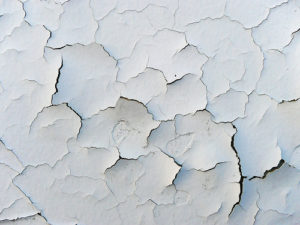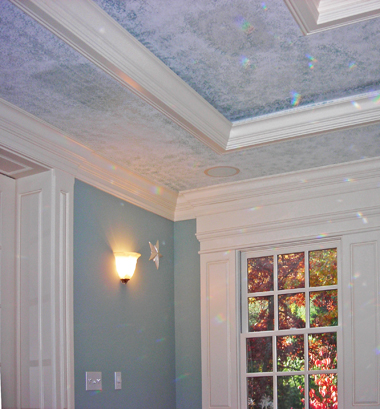 There’s a reason professional painters will always be in demand. Painting interiors can be as much of a challenge as painting home exteriors. For those homeowners brave enough to tackle interior painting, getting the job done right requires information about potential problems and how to prevent them from occurring. Check out the following solutions for blistering, blocking, burnishing, and cracking.
There’s a reason professional painters will always be in demand. Painting interiors can be as much of a challenge as painting home exteriors. For those homeowners brave enough to tackle interior painting, getting the job done right requires information about potential problems and how to prevent them from occurring. Check out the following solutions for blistering, blocking, burnishing, and cracking.
Blistering – Sometimes bubbles appear as you are painting. Bubbling is a result of lifting of paint film from the surface underneath, loss of adhesion, applying alkyd or oil-based paint over a surface that is wet or damp, moisture which has seeped into the home through exterior walls, or exposure of latex paint film to moisture or high levels of humidity after the paint has dried.
Solution – Blisters can possibly be removed by scraping, sanding, and repainting with a quality acrylic latex interior paint, but that is only if the blisters do not reach into the substrate.
For situations where the blisters have reached the substrate, the most important step is to remove the source of moisture, if at all possible. It may be helpful to install exhaust fans or vents. Finally, follow above directions and remember to apply primer first and then the top coat.
Blocking – An unexpected and undesirable result of interior painting that people often experience is blocking, which is when two painted surfaces stick together, such as a door sticking to the jamb. Possible causes include: using substandard gloss or semi-gloss paints or not allowing the painted surfaces to dry thoroughly before closing windows or doors.
Solution – The most reliable way to prevent blocking is to use top quality gloss or semi-gloss acrylic latex interior paint and carefully follow directions regarding drying times. Persistent blocking can be relieved with talcum powder.
Burnishing – When there is an increase in sheen or gloss of paint film as a result of scrubbing or rubbing against objects, it is called paint burnishing. The possible causes of burnishing include: using flat paint in high-traffic areas in which a higher sheen level in the paint is a better choice, frequent spot cleaning and washing, using a low-grade paint with poor scrub resistance, and furniture or other objects rubbing against the walls.
Solution – Use semi-gloss or gloss paint – not flat sheen – in high-traffic areas. On surfaces that require cleaning regularly, such as doors and trim, use a top quality latex paint, which has better durability in standing up to cleaning. When you need to clean painted surfaces, use a sponge or soft cloth and non-abrasive cleaners and then rinse with water.

Cracking and Flaking – Over time, the dry paint film may begin splitting, which leads to total failure of the paint job. Early on, this issue appears as hairline cracks and then, later on, flaking occurs. Possible causes of cracking and flaking of interior paint include: overspreading or over-thinning the paint, using substandard paint that has inadequate flexibility and adhesion, inadequate preparation of the paint surface, or excessive hardening of alkyd paint over time.
Solution – Use a scraper or wire brush to remove the flaking, loose paint; and sand the surfaces and edges that have a feathered appearance. Use of a filler may be required, if there are multiple layers of paint flaking. Before repainting bare wood, use a top quality primer. Paint with a top quality top coat, as well, to prevent the problem from recurring.
Contact our paint professionals today for help, advice, or to schedule a top quality professional interior or exterior paint job.
Franklin Painting LLC – Call us Toll Free at 877-646-7774
or at our main office number 860-678-7701
160 Brickyard Road, Farmington, CT 06032



